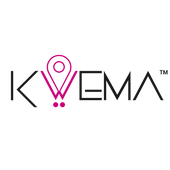In a previous blog, we learned that workplace emergencies are situations that threaten the safety and well-being of employees, customers, and the public. If an organization cannot respond to these unexpected situations, they can lead to different consequences such as physical or environmental damage and disrupt or shut down activities.
We also discussed some of the essential elements that a work emergency plan must comprehend, including evacuation policies and procedures. This blog will focus on the importance of having an evacuation plan and provide some useful recommendations to help you improve this essential element for your workplace emergency plan based on OSHA standards.
Work emergencies can be stressful, and people can easily panic. Therefore, a lack of evacuation policy and procedures can result in a disorganized evacuation, generating confusion among people in your workplace. Moreover, it can increase the risk of property damage and injury. On the contrary, when setting the right evacuation procedures, employees have a transparent chain of command; they know specific routes, exits, and the particular place they have to go during the evacuation. Additionally, developing an evacuation plan allows you to safely assist visitors and clients even though they don’t know your workplace and keep calm.
Here we share some recommendations you can put into practice for improving evacuation procedures at your workplace:
Identify the potential hazards your workplace can be exposed to
Keep in mind that an evacuation plan is crucial to the smooth exit of the building but can change according to the different types of workplace situations. Workplace emergencies include natural disasters such as floods, hurricanes, and earthquakes, and others have problems like fires, chemical spills, or active shooters.
Provide adequate training
Your employees must be familiar with the workplace emergency plan. Make sure they understand what procedures they have to follow to evacuate in different situations. In addition to this, employees must know the different types of potential emergencies they can experience while on the job, their roles and responsibilities, and how they have to report and communicate emergencies.
Conduct evacuations drills to improve your workplace evacuation plan
Evacuation drills are beneficial to help your employees familiarize themselves with the evacuation routes and enhance your workplace evacuation plan. Consider drill training when hiring new employees, introducing new processes and equipment related to evacuation routes, and changing workplace facilities design.
Accelerate emergency evacuation by using technology
Accounting for employees and third parties in your workplace after an evacuation is critical. This can be a challenging task due to the number of employees, especially in large organizations. Moreover, chaotic evacuations can lead to confusion, generating delays in rescuing someone trapped in the building or sending staff to unnecessary rescue operations that can put them at risk.
Rolling wearable technology out can help make evacuation and roll calls quickly by tracking employees’ location as Kwema devices do. Our wearables can help security professionals automate roll calls during a mass evacuation or drill, save precious time, and avoid training costs as they can be placed in something employees already wear.
Watch how Kwema is disrupting workplace safety.
